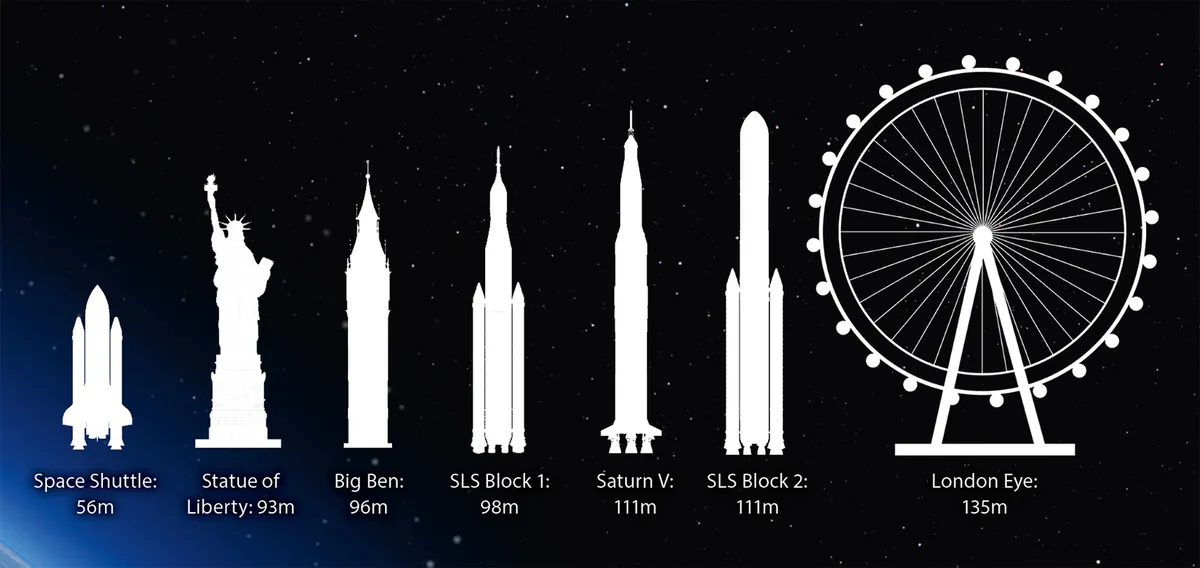When the Space Shuttle programme shut down in 2011, NASA was left unable to launch heavy payloads into orbit.
But that will soon change as the agency prepares to launch its Space Launch System (SLS) in March or April 2022.
The SLS will eventually carry payloads of up to 45 tonnes to lunar orbit and is a key part of the Artemis programme, NASA’s endeavour to send the first woman to the lunar surface by 2025.
Read more:
- A look at the Artemis, SpaceX and Virgin Galactic spacesuits
- What do astronauts eat in space?
- Podcast:How microorganisms can assist human spaceflight
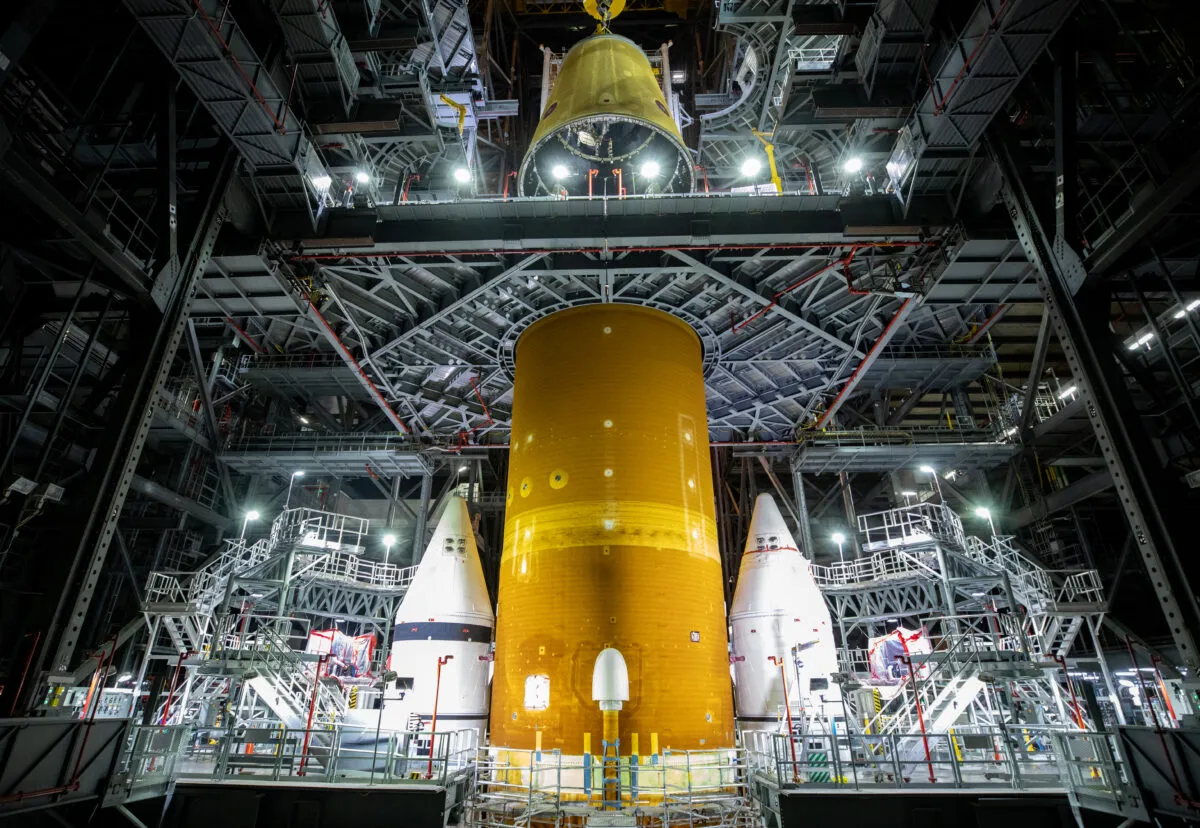
Initially, the SLS’s first test launch was due in 2016, but the system proved more challenging than expected.
Even after six years’ delay, the 2022 SLS is not the final version.
The first three launches will use the Block 1 design followed by a Block 1B version with a more powerful upper stage, before being replaced by a Block 2 design with even more thrust.
But even in Block 1, SLS will produce 15% more thrust than the Saturn V.
Currently, NASA’s budget allows one SLS a year to be produced at most.
The first three have all been earmarked for the Artemis programme and, with a successful test in spring 2021, NASA will begin to stage increasingly ambitious deep space missions – both human and robotic – to the Moon, Mars and beyond.
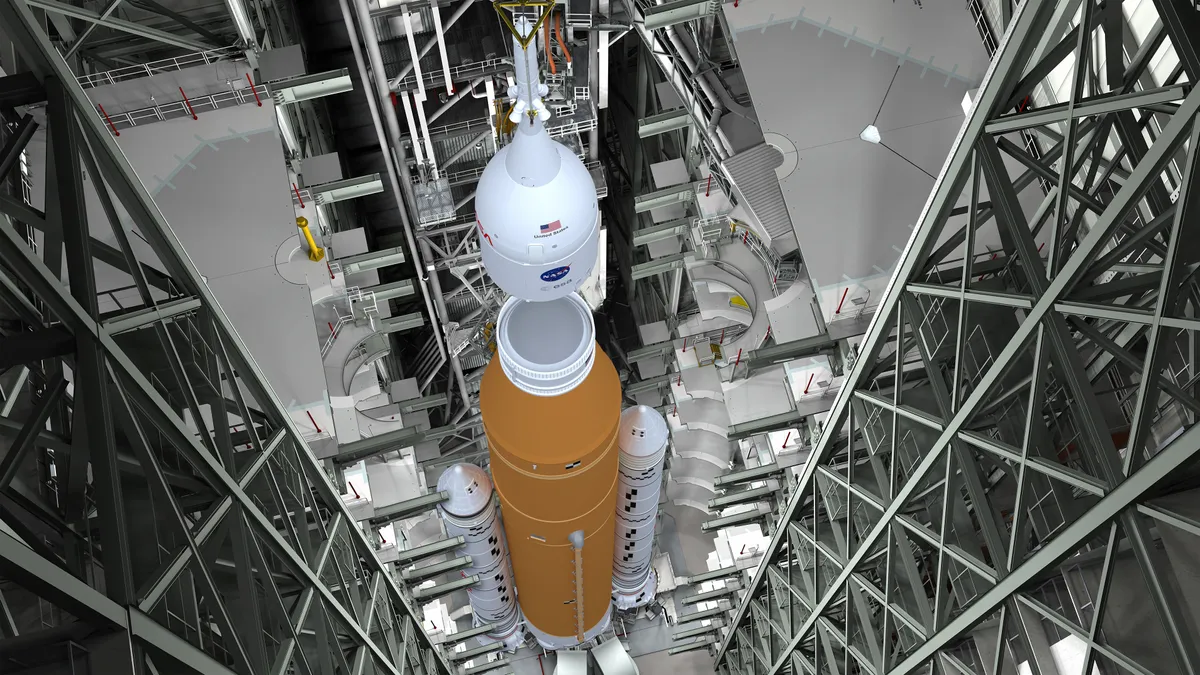
NASA SLS Block 1 stats
- Height: 98m
- Weight: 2.6 million kg
- Payload weight to low-Earth orbit: 95 tonnes
- Payload weight to the Moon: 27 tonnes
- Thrust: 39 million newtons
- Solid fuel: Polybutadiene acrylonitrile
- Liquid fuel: Oxygen and hydrogen
- Top speed: 39,500km/h
The Space Launch System's key features
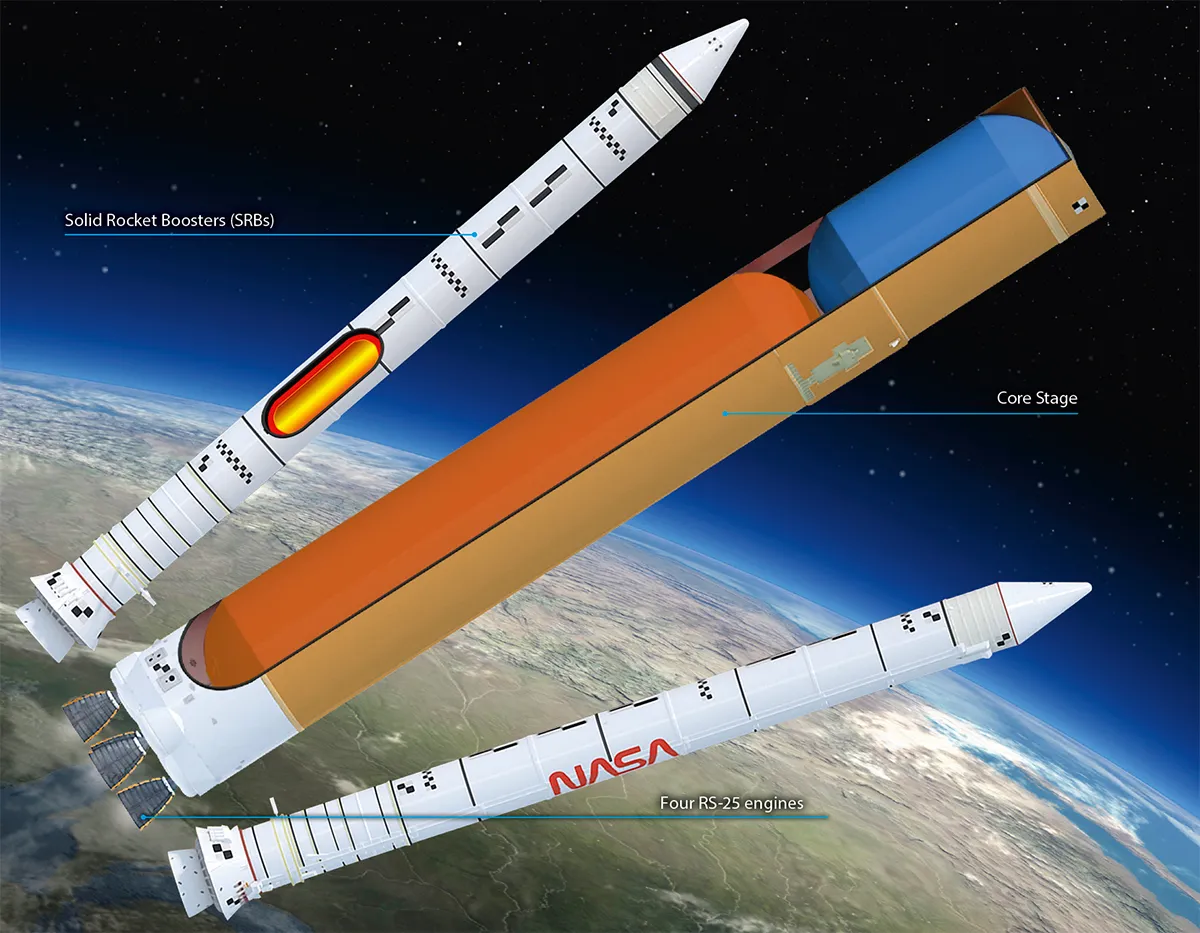
Solid Rocket Boosters (SRBs)
Once the command to ignite the SRBs is given by the onboard computer, a booster charge fires down the length of the rocket, which in turn ignites the solid rocket propellant.
Core Stage
Contains the liquid fuel that feeds the four RS-25 engines. It burns through 2 million litres of liquid hydrogen (orange tank) and almost 750,000 litres of liquid oxygen (blue tank) in eight minutes to reach low-Earth orbit.
Four RS-25 engines
Originally designed for use on the Space Shuttle, these provide propulsion for the entirety of the rocket’s ascent and have a ‘gimbal bearing’, which keeps the rocket on course.
Launch Vehicle Stage Adaptor (LVSA)
A 9m-tall cone that connects the upper and lower stage, encasing the ICPS (Interim Cryogenic Propulsion Stage).
Orion spacecraft
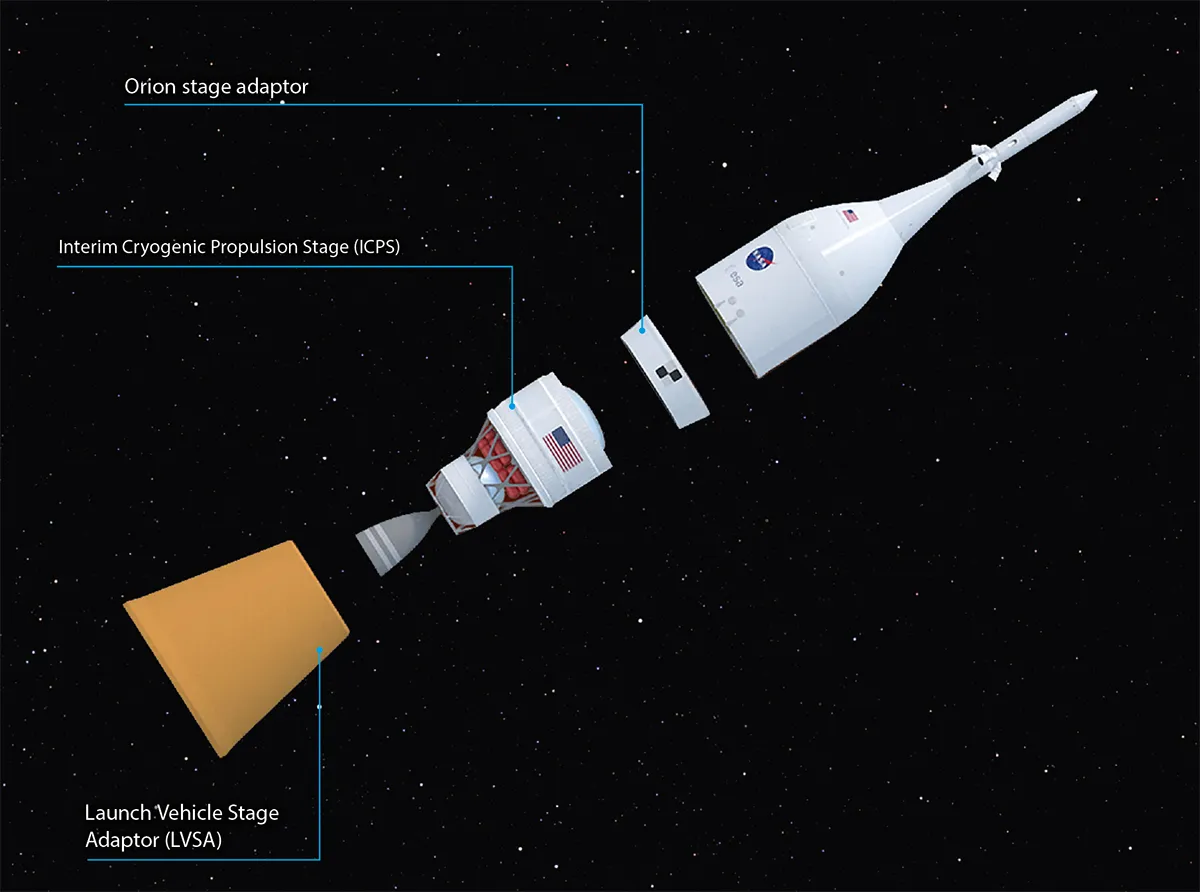
The Orion spacecraft will begin its journey attached to the top of the Core Stage.
Its Crew Module (CM) is designed to ferry up to six astronauts beyond low-Earth orbit.
If something goes wrong at launch, the Launch Abort System (LAS) will carry the CM away from danger.
The LAS and the Core Stage will detach once the spacecraft reaches low-Earth orbit, along with the protective panels.
The ICPS will then fire, sending the spacecraft towards the Moon.
Orion spacecraft's key features
Orion stage adaptor
A ring-shaped device that keeps the Orion spacecraft attached to the top of the assembly.
Interim Cryogenic Propulsion Stage (ICPS)
The ICPS is used to propel the Orion capsule towards the Moon once it reaches low-Earth orbit. It uses liquid hydrogen and oxygen.
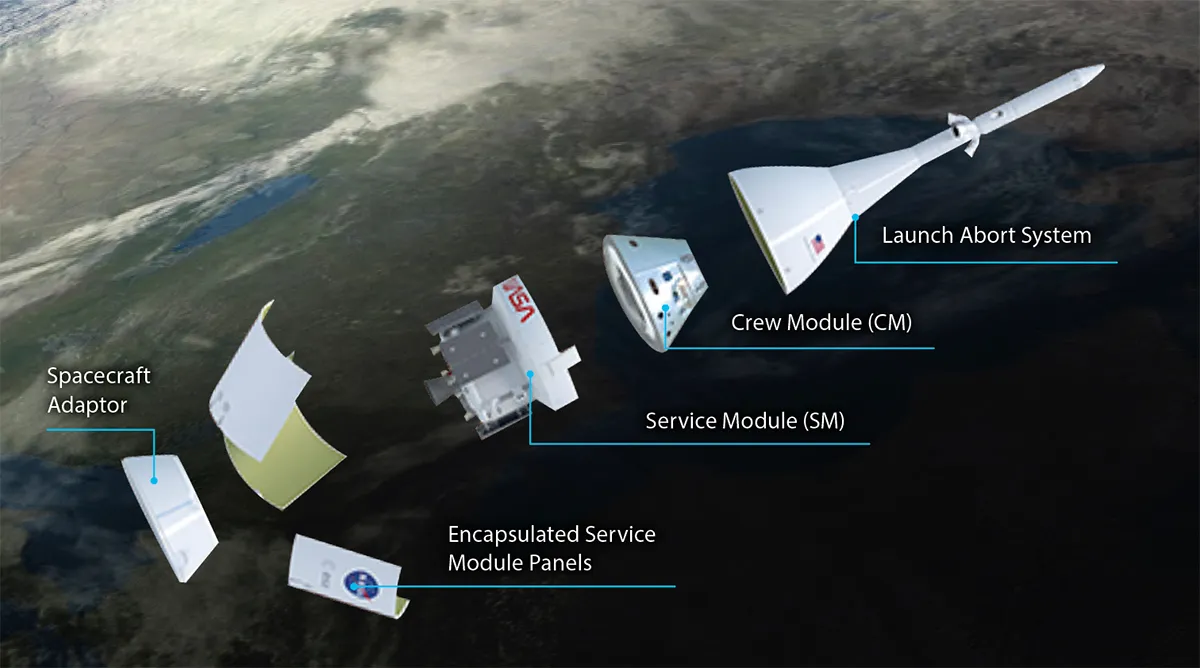
How big is NASA's Space Launch System?
The SLS Block 1 measures 98m high, while the SLS Block 2 will stretch up to 111m high.
Here's how both compare to some more familiar features.
